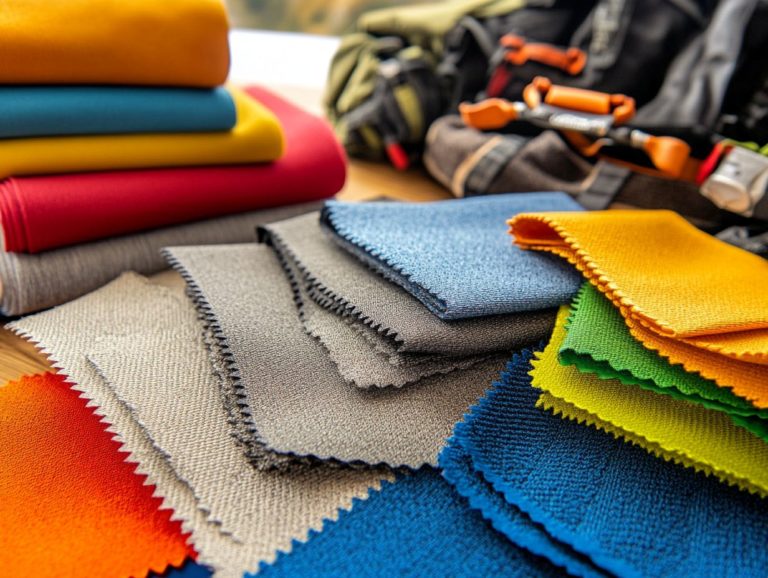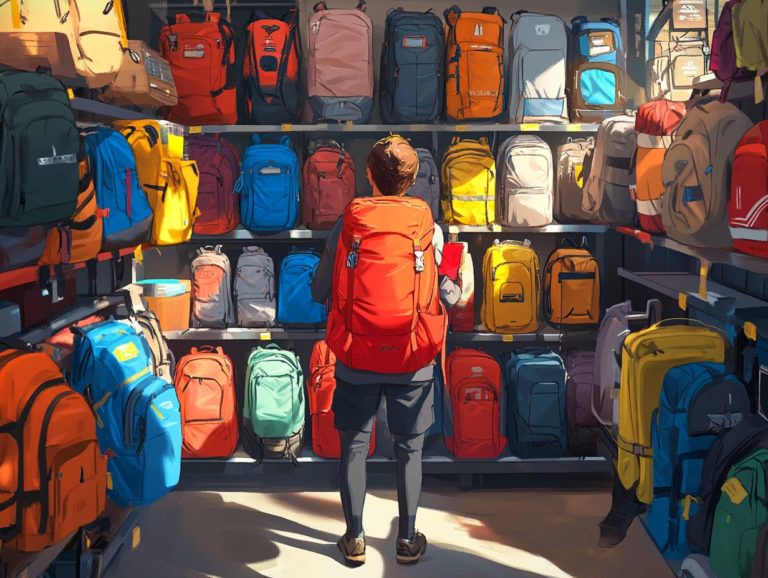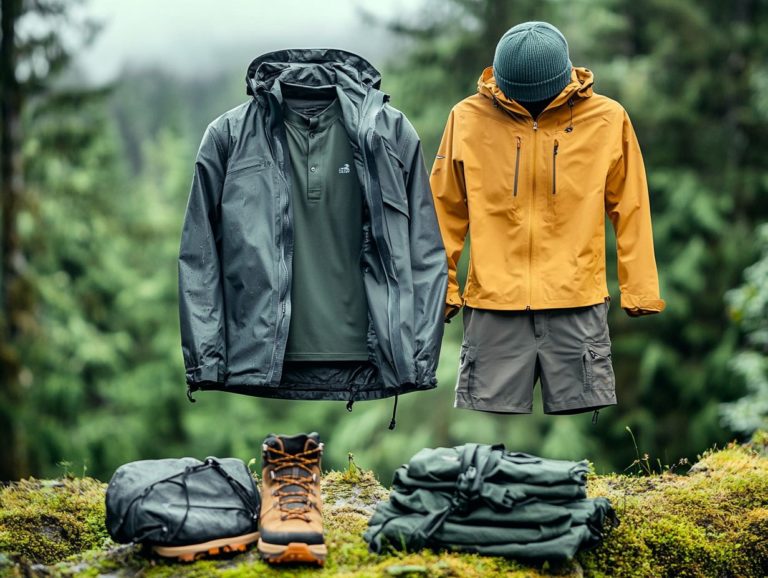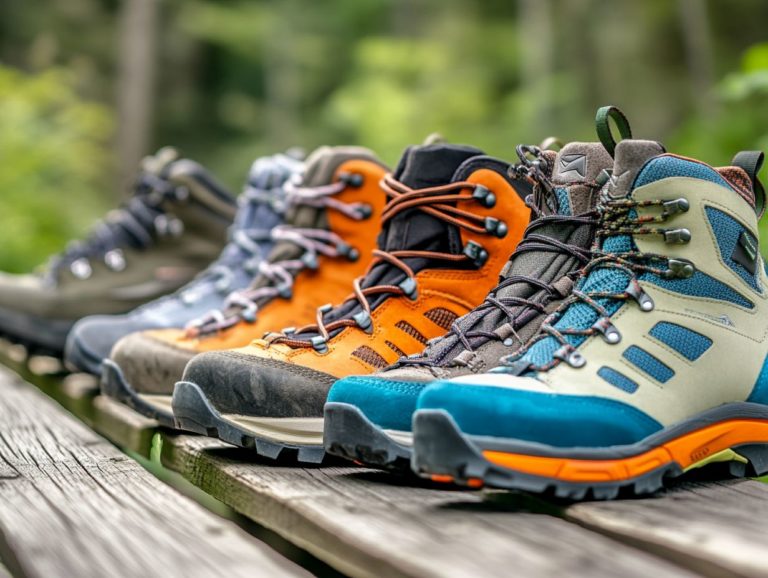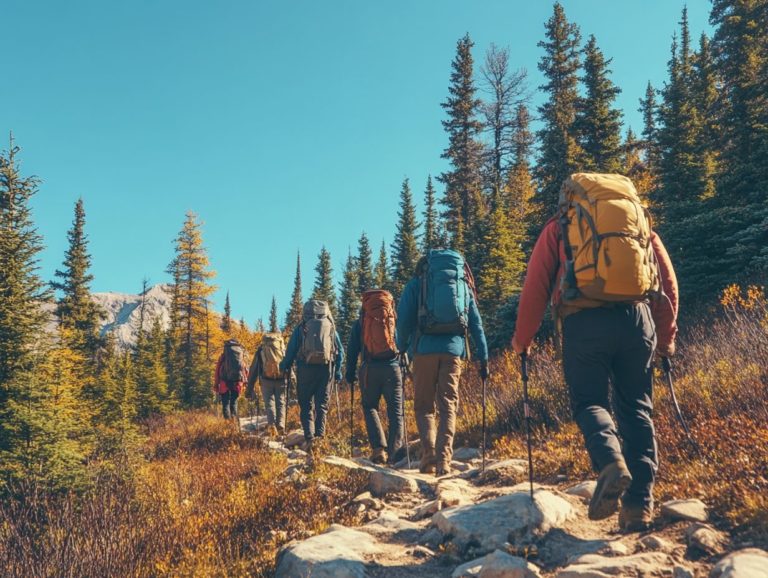How to Maintain Your Outdoor Gear for Longevity
Maintaining your outdoor gear is crucial for ensuring its longevity and optimal performance in the wild.
Whether you re a camper, hiker, or adventurer, grasping the right cleaning techniques, storage tips, and maintenance strategies can save you both time and money.
From determining when to repair or replace your gear to deciding between DIY fixes and professional assistance, this guide will walk you through every step of the process.
Get ready to uncover amazing tips to keep your gear in top shape!
Contents
Key Takeaways:
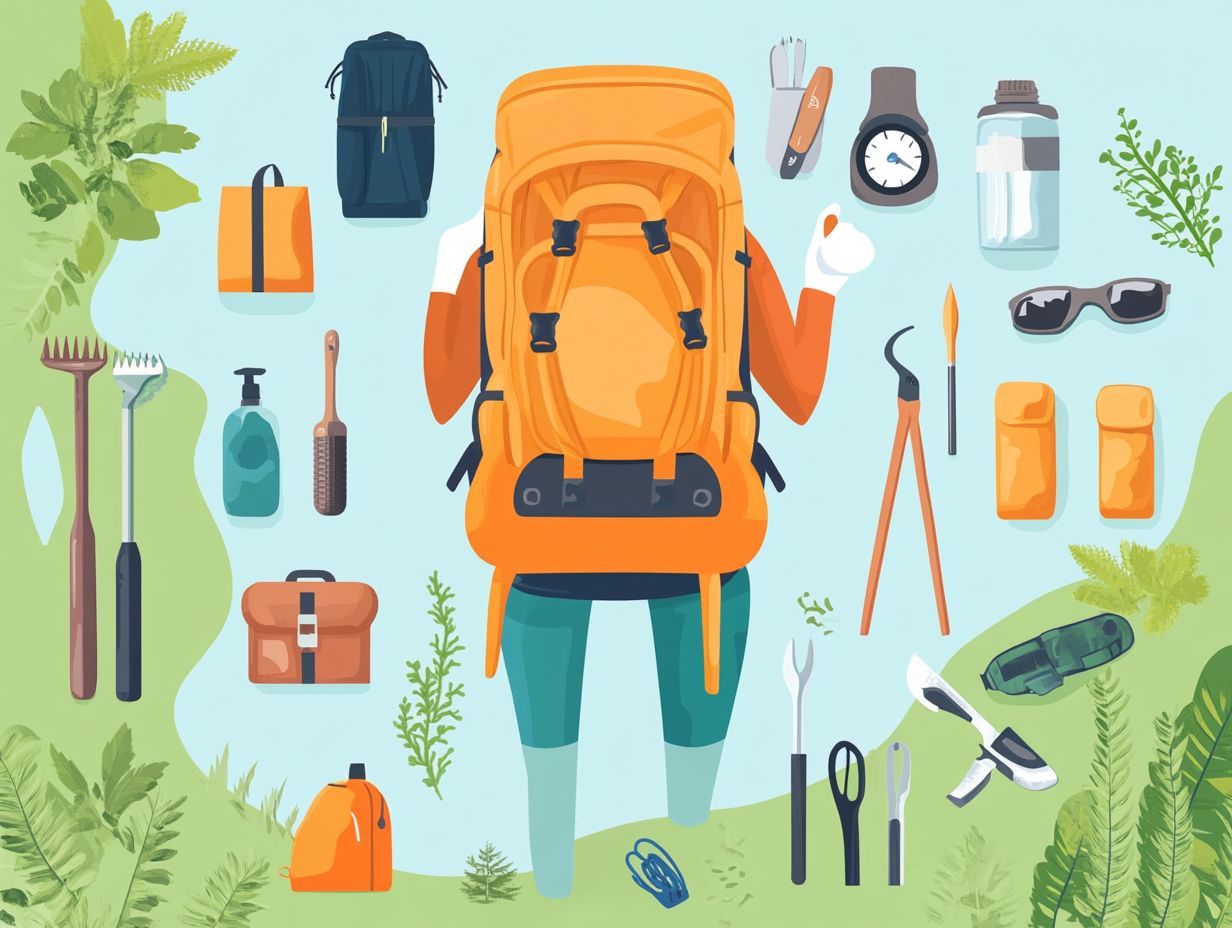
Why is it Important?
Understanding the significance of outdoor gear maintenance is essential for maximizing both the longevity and performance of your equipment. Proper care not only enhances your safety during outdoor escapades but also saves you money by extending the lifespan of pricey items like tents, hiking boots, and personal protective equipment (PPE).
This practice entails a thorough inspection of your gear, finding good ways to store it, and following the manufacturer’s guidelines for cleaning and maintenance.
For example, routinely checking your tent for holes or frayed seams can prevent water from invading during a downpour, ensuring you have a safe and dry camping experience. Likewise, examining your footwear for signs of wear and tear is essential to avoid slips and injuries on those rugged trails.
Regular washing and drying, coupled with proper storage away from direct sunlight, will help maintain the integrity and performance of your materials.
By adopting these straightforward yet effective practices, you can savor the thrill of your adventures while enjoying the peace of mind that comes from knowing your gear is reliable and ready to face whatever nature throws your way.
Cleaning and Drying Your Gear
To keep your gear functional and damage-free, clean and dry it properly. This is vital for outdoor essentials like tents and sleeping bags to avoid issues like mildew and rips.
By using the right cleaners and allowing your gear to air dry, you can ensure that materials like nylon and polyester stay in prime condition. Regular cleaning not only minimizes wear and tear but also extends the lifespan of your outdoor adventures. For more insights, check out these top tips for caring for your climbing gear, allowing you to enjoy every moment without worry.
Proper Techniques and Products
Adopting the right techniques and products for cleaning your outdoor gear is essential for both performance and durability. By using appropriate cleaners and waterproofing products, you can significantly extend the life of your equipment.
For example, utilizing zip lubricant is a game-changer for maintaining zippers on your bags and tents, while following care instructions ensures safe cleaning practices, preventing damage from harsh chemicals.
In terms of tents, a gentle scrub brush paired with mild soap can effectively remove dirt without compromising the fabric’s integrity. Footwear, on the other hand, requires a more tailored approach; specific cleaners designed for the material be it leather or synthetic will yield the best results.
It’s also wise to consider eco-friendly cleaning options that minimize environmental impact while still delivering effective results. After washing, treating your gear with Durable Water Repellent (DWR), a treatment that keeps your gear water-resistant, can restore water resistance.
Just remember, proper application techniques are key to ensuring maximum coverage and effectiveness. Regular maintenance doesn t just keep your gear looking sharp; it also preserves its functionality for countless adventures ahead.
Start taking care of your outdoor gear today for endless adventures tomorrow!
Storage Tips for Different Types of Gear
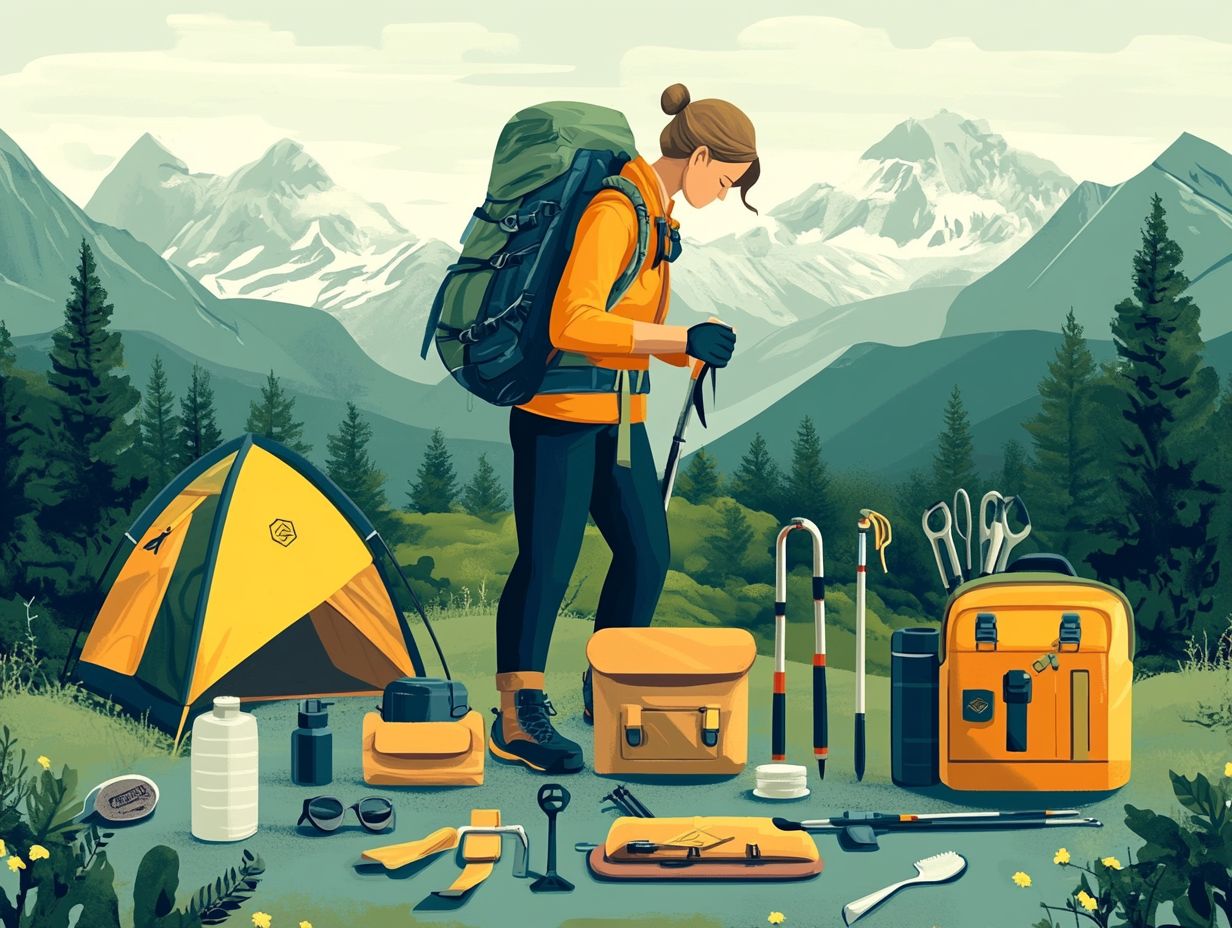
Effective storage tips are crucial for your outdoor gear. They ensure that your equipment stays in top-notch condition and is ready for your next adventure.
Implementing proper storage techniques, like using equipment covers and avoiding the temptation to overstuff your bags, will help prevent mildew and damage from moisture and prolonged heat exposure.
Paying attention is crucial it can save your gear from wear and tear. This is especially vital for items such as sleeping bags, tents, and backpacks, all of which deserve careful handling and meticulous storage.
Clothing, Tents, Backpacks, and More
Taking proper care of your clothing, tents, and backpacks is essential for maximizing the longevity of your gear. It also ensures your equipment performs flawlessly on outdoor adventures.
By adhering to care instructions and utilizing appropriate storage solutions, you can significantly minimize wear and tear. This helps prevent rips and damage during downtimes.
Maintaining the quality of your outdoor gear goes beyond storage. It also involves routine inspections for any signs of wear, such as frayed seams or torn fabric. For your clothing, consider using breathable garment bags that allow moisture to escape while keeping dust and pests at bay.
For tents, make sure they are thoroughly cleaned and completely dry before folding and packing them away. Ideally, store them in a cool, dark place to avoid degradation from sunlight.
Backpacks do best when hung or stored upright rather than crumpled. This helps them maintain their shape. Opting for eco-friendly storage solutions, like recycled bins or organic cotton bags, not only protects your gear but also aligns with an environmentally conscious mindset. These practices enhance your outdoor experience while being kind to the planet.
Repairing and Replacing Gear
Understanding when to repair or replace your gear is essential for outdoor enthusiasts. This knowledge not only saves you time and money, but also ensures that your equipment remains safe and effective.
By regularly inspecting for damage and knowing when to tap into your repair skills, you can significantly enhance the functionality and longevity of your outdoor gear. Additionally, understanding how to store your camping gear properly and familiarizing yourself with which waterproofing agents or seam sealing (a method to waterproof seams) techniques to apply is equally important.
When to Repair or Replace
Don t wait! If you notice zippers acting up or fabric starting to fray, it might be time to replace those tired components. Minor repairs, however, can often be tackled with just a bit of DIY flair.
By inspecting your essentials think tents, backpacks, and waterproof jackets you can spot signs of aging, like faded colors and rips, which could compromise functionality.
When you check your tent, pay attention to seams; they might just need a re-seal rather than a complete overhaul. Similarly, if a shoulder strap on your backpack is frayed but the main body is holding strong, some stitching or fabric patches could breathe new life into it.
Understanding the materials used in your gear can guide you in making informed choices. For instance, synthetic fabrics can often be revived with heat and adhesive products. Developing your repair skills not only saves you money but also nurtures a deeper bond with your gear, paving the way for more sustainable practices in your outdoor adventures.
DIY vs Professional Services
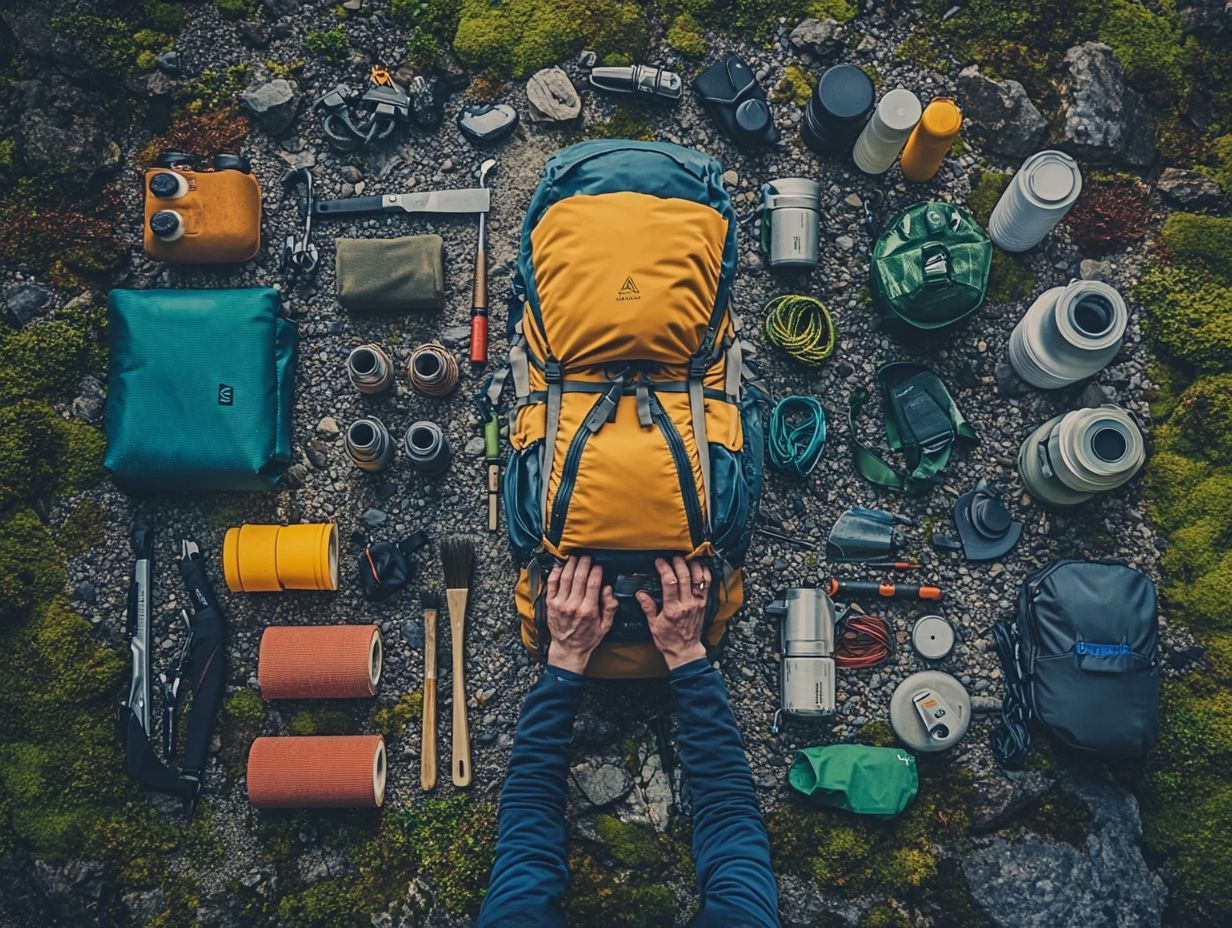
Weighing the benefits of DIY repairs against professional services is crucial for maintaining your outdoor gear. This approach helps optimize costs and ensures longevity.
While many repairs can be managed effectively with your own skills and waterproofing products, some issues may require help from an expert to guarantee safety and performance.
For instance, when it comes to fixing minor tears in tents or reinforcing seams, you might find that tackling these projects yourself can save you money and provide a gratifying sense of accomplishment. However, more complex tasks like restoring the integrity of specialized equipment such as mountaineering gear or high-performance footwear often necessitate a trained professional s touch to avoid compromising safety.
The learning curve refers to how quickly you can learn a new skill. It can be steep if you lack prior experience, potentially leading to further damage or even injury. Understanding the nature of the repair is important, along with your comfort level with tools and techniques, to determine the best approach for your gear.
Long-Term Maintenance Strategies
Start your adventure with great long-term maintenance strategies! Implementing long-term maintenance strategies for your outdoor gear can greatly enhance its durability and performance throughout your adventures. By adopting preventive measures, scheduling regular check-ups, and consistently inspecting your equipment for signs of wear and tear, you can ensure that your gear remains reliable and ready for action whenever you need it.
Preventive Measures and Regular Check-Ups
Establishing preventive measures steps taken to keep your gear in great shape and committing to regular check-ups are essential practices for ensuring the longevity of your outdoor gear.
A routine inspection of your equipment cleaning it and checking for damage can help you identify potential issues before they escalate into significant problems, thereby maintaining optimal performance during your outdoor adventures.
Taking the time to create a maintenance schedule can truly be a game-changer. This schedule should encompass seasonal cleaning, detailed inspections for wear and tear, and even storage recommendations to prevent deterioration while your gear is not in use.
Regularly assessing your tents for mold or leaks, lubricating zippers, and conditioning leather components are simple tasks that can significantly extend the life of your gear. Familiarizing yourself with proper storage techniques, like keeping items dry and out of direct sunlight, also contributes to their durability.
Ultimately, adopting these practices not only enhances your gear’s performance but also ensures your safety on the trail.
Frequently Asked Questions
How do I clean my outdoor gear for longevity?
To maintain your outdoor gear, clean it after each use. Follow the manufacturer’s instructions for cleaning, using gentle soap and warm water. Avoid using harsh chemicals or hot water, as these can damage the material. Rinse thoroughly and air dry before storing.
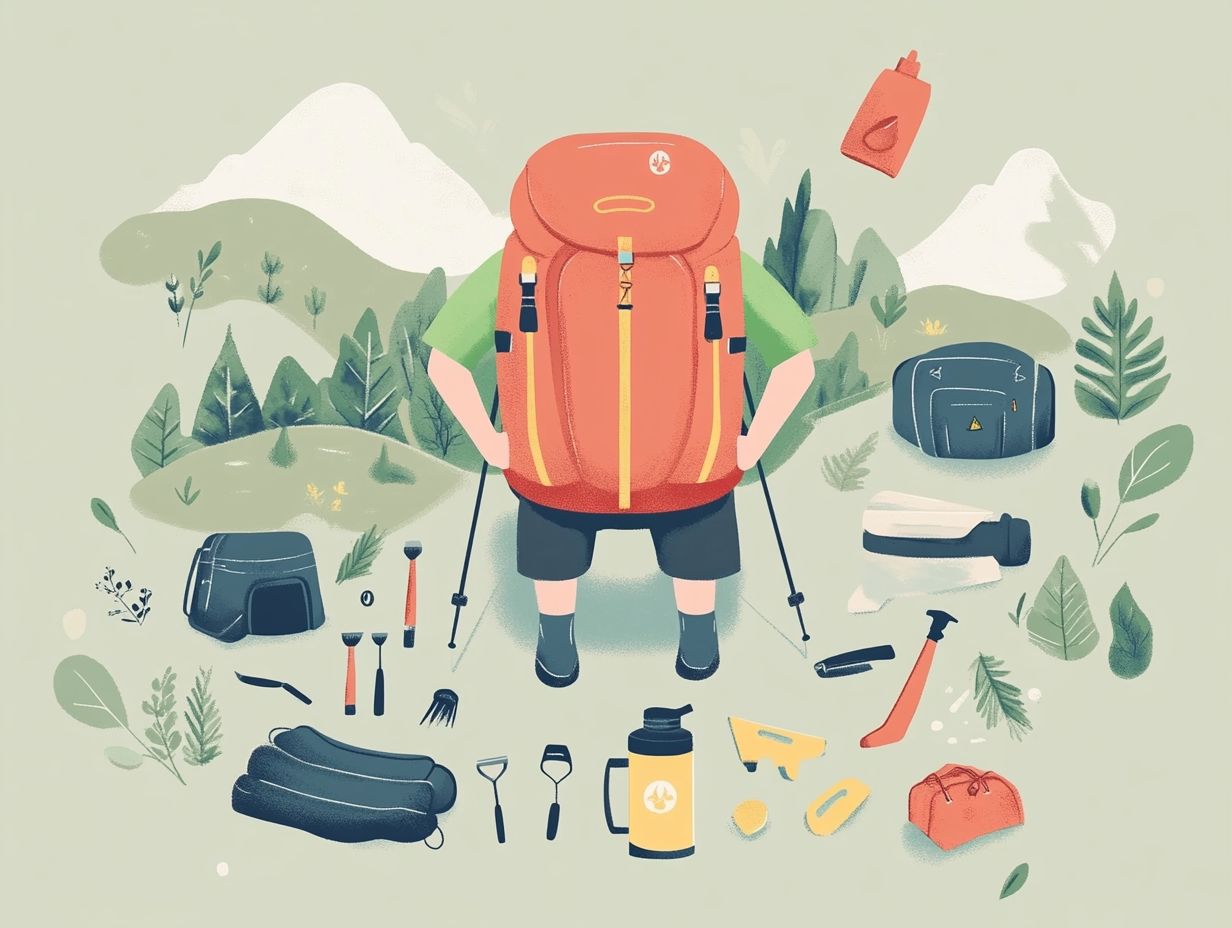
How often should I clean my outdoor gear?
Clean your gear after every use. This helps remove dirt, sweat, and debris that can cause damage over time.
How do I store my outdoor gear to make it last longer?
Store your outdoor gear properly. Ensure it is clean and completely dry before storing. Avoid damp or humid environments, as this can lead to mold growth. Use a breathable storage bag or hang it in a well-ventilated area to prevent musty odors.
What can I do to protect my outdoor gear from the elements?
To protect your gear from sun, rain, and extreme temperatures, store it in a shaded area and avoid prolonged exposure to sunlight. Use waterproofing products to help keep water out and protect against moisture.
Is it necessary to regularly inspect my outdoor gear?
Yes, regular inspections help identify any damage or wear before it becomes a bigger issue. Check for tears, holes, or weak spots in the material. If you notice any damage, address it immediately to extend the lifespan of your gear.
Can I repair my outdoor gear myself?
Depending on the damage, you may be able to repair your gear yourself. For small tears or holes, repair kits specifically for outdoor gear are available. For more serious damage, take it to a professional repair shop to ensure it’s fixed correctly.

